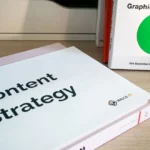Navigating the vast ocean of social media metrics can feel overwhelming. I remember when I first embarked on this journey, the sheer amount of data was intimidating. But then I discovered how Artificial Intelligence (AI) could turn these numbers into actionable strategies. Today, I’m here to guide you through this transformative process, sharing my experience and insights.
Understanding the Data Deluge
Like many, I started by collecting data from various social media platforms. Metrics such as likes, shares, comments, and followers were piling up. I quickly realised that raw data, while valuable, is only the tip of the iceberg. The real treasure lies in interpreting this data to inform decisions. Here’s how I managed to sift through this sea of information.
Choosing the Right AI Tools
The first step was selecting the right AI tools. I explored several options, eventually settling on a combination of Google Analytics, Hootsuite Insights, and IBM Watson Analytics. These tools offered robust features for data collection and analysis. The key was to find tools that not only gathered data but also provided insights through easy-to-understand visualisations and reports.
Collecting and Preparing Data
With my tools in place, the next step was data collection. This involved linking my social media accounts to the chosen AI platforms. Within days, the tools began to aggregate data, presenting it in neat dashboards. However, raw data needed cleaning. I removed duplicate entries, filtered out spam, and ensured consistency in metrics across platforms. This preparation was crucial to ensure the accuracy of subsequent analyses.
Analysing the Data
AI excels in pattern recognition, and this was a game-changer for me. The tools I used employed machine learning algorithms to identify trends and correlations. For instance, I learned that posts with images garnered 50% more engagement than text-only posts. AI also highlighted optimal posting times, revealing that my audience was most active on Wednesdays and Fridays between 1 PM and 3 PM.
Translating Insights into Strategy
The real magic happened when I translated these insights into actionable strategies. Based on the data, I adjusted my content calendar. I began scheduling posts with visuals during peak engagement times. Additionally, I utilised sentiment analysis features to gauge audience reactions. Positive feedback indicated successful content, while negative sentiment highlighted areas for improvement. This continuous feedback loop helped refine my approach over time.
Monitoring and Adjusting
Implementing a strategy is not a one-time task; it’s an ongoing process. I made it a point to regularly review performance metrics. AI tools provided real-time updates, allowing me to tweak my strategy as needed. For example, if a particular type of post underperformed, I analysed the data to understand why and adjusted my future content accordingly. This adaptive approach ensured that my strategy remained relevant and effective.
Leveraging Predictive Analytics
One of the most powerful features of AI is predictive analytics. By analysing historical data, AI can forecast future trends. This capability allowed me to anticipate audience behaviour and tailor my strategy proactively. For example, predictive analytics suggested a surge in engagement during a holiday season, prompting me to plan a special campaign. This foresight gave me a competitive edge and maximised my engagement.
Learning from Challenges
Of course, the journey wasn’t without challenges. There were times when the data was ambiguous, or the AI predictions didn’t quite match reality. However, these instances were learning opportunities. I fine-tuned my data collection methods, improved my analytical skills, and learned to interpret AI outputs more critically. The key was to remain flexible and open to continuous learning.
Collaborating with Teams
AI tools also facilitated better collaboration with my team. Sharing insights through detailed reports and visualisations helped align everyone with our goals. We held regular brainstorming sessions to discuss AI-generated insights and collectively decide on the best strategies. This collaborative approach not only enhanced our strategy but also fostered a sense of unity and purpose within the team.
Reflecting on the Journey
Looking back, the transition from raw data to actionable strategy using AI was transformative. It shifted my approach from reactive to proactive, allowing me to make informed decisions based on solid evidence. The combination of the right tools, thorough data preparation, continuous monitoring, and collaborative efforts created a robust framework for social media success.
In essence, harnessing AI to transform social media metrics into strategy is about leveraging technology to gain deeper insights, anticipate trends, and make data-driven decisions. By following these steps, you too can unlock the potential of your social media data and craft strategies that resonate with your audience, driving engagement and growth.











